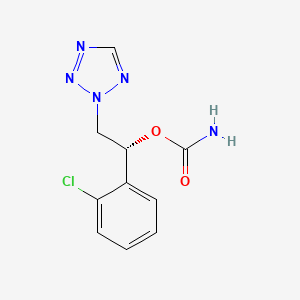Amplyx Pharmaceuticals, a company developing first-in-class products for life-threatening infections, announced that the U.S. Food and Drug Administration (FDA) Office of Orphan Product Development has granted orphan drug designation to APX001, the company’s lead drug candidate, for treatment of cryptococcosis.
Orphan drug designation qualifies APX001 for seven years of market exclusivity in the U.S. upon FDA approval of a new drug application (NDA) for the orphan designated indications. APX001 had previously received orphan drug designation for the treatment of invasive candidiasis, invasive aspergillosis, coccidioidomycosis, and rare mold infections caused by Scedosporium spp., Fusarium spp., and Mucorales fungi (including Mucor spp., and Rhizopus spp.). In addition to orphan designations, FDA had previously granted Qualified Infectious Disease Product (QIDP) designation for APX001 for treatment of cryptococcosis, invasive candidiasis, invasive aspergillosis, and coccidioidomycosis. QIDP provides significant development incentives including eligibility for Fast Track designation, priority review and when combined with orphan drug designation, a total of twelve years of marketing exclusivity.
“Orphan and QIDP designations highlight the potential for APX001 to address unmet needs of patients with rare, life-threatening infections,” said Ciara Kennedy, Ph.D., President and Chief Executive Officer of Amplyx. “And with the FDA’s recent addition of cryptococcal meningitis to its list of neglected tropical diseases, Amplyx has the potential to obtain a valuable Tropical Disease Priority Review Voucher from the FDA, creating additional value for Amplyx and its stakeholders.”
Cryptococcosis is an infectious disease of the lungs or central nervous system (the brain or spinal cord) caused by the fungus Cryptococcus (either Cryptococcus neoformans or Cryptococcus gattii), which is typically found in the environment and inhaled. Brain infections due to the fungus Cryptococcus are called cryptococcal meningitis. Infection is most often seen in people with a weakened immune system, including those who are infected with HIV/AIDS, take high doses of corticosteroid medicines, have had an organ transplant, are receiving immune suppressing therapies for cancer or other diseases, or have Hodgkin’s disease.
“While antiretroviral therapy has successfully extended the lifespan of HIV patients, cryptococcal meningitis remains a leading cause of death in HIV patients, particularly in low and middle-income countries,” said Michael Hodges, MD, Chief Medical Officer of Amplyx. “The standard therapy of intravenous amphotericin B plus flucytosine requires inpatient hospitalization and has been known to cause significant side effects including anemia and kidney toxicity. APX001, Amplyx’s first-in-class antifungal agent, in combination with fluconazole, has the potential to be a transformational life-saving, once daily, all oral treatment for cryptococcal meningitis.”
http://www.probechem.com/products_APX001.aspx











